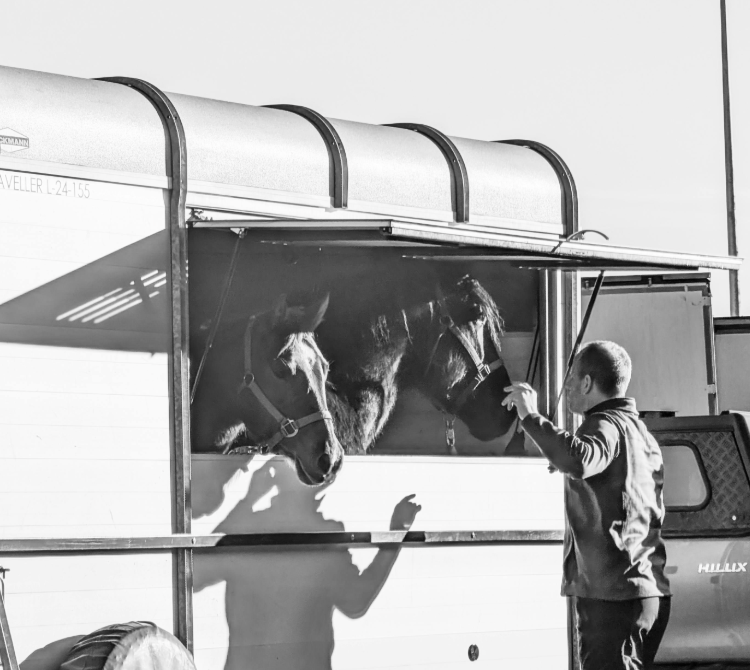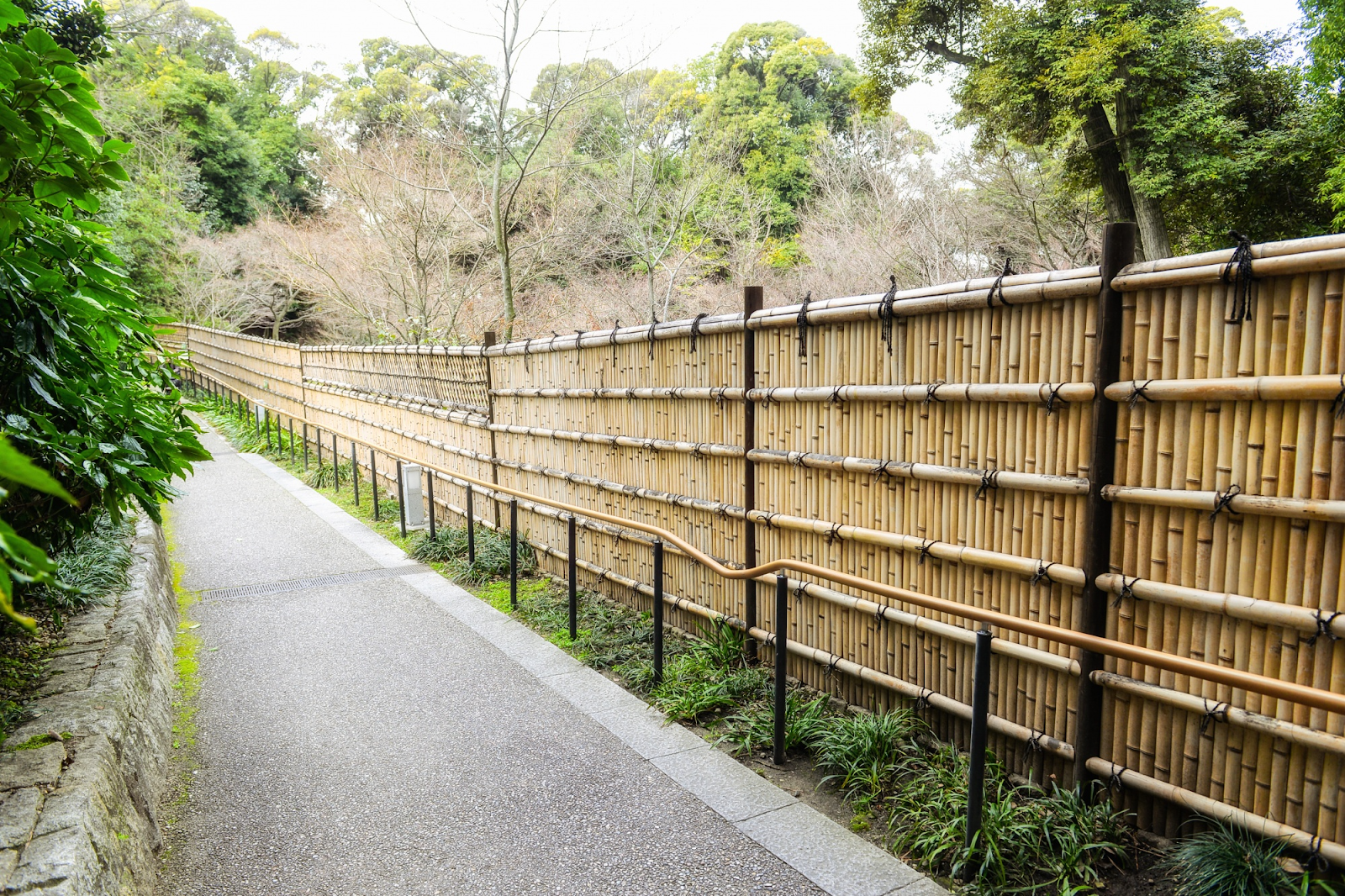Finance
Tesla Service in Dubai | Expert Care for Your EV

Tesla cars don’t need a lot of care, but the heat in Dubai can make things like the AC work less well, the battery wear out, and the touchscreen stop working. Professional Tesla service makes sure everything runs smoothly by checking the thermal system, updating the software, and diagnosing the EV. Certified garages can take care of all Tesla models, including the Model S, 3, X, and Y. Basic service costs between AED 750 and 1,200, while major battery and drivetrain care costs between AED 2,000 and 4,500. Using Tesla-specific tools, we check the brakes, top off the coolant, align the wheels, and scan the high-voltage system. Easily book, get updates in real time, and save money on package deals.
Why Your Tesla Needs Special Care in Dubai
Tesla’s design philosophy puts simplicity and efficiency first, which means that their cars have fewer moving parts than regular gas cars. But that doesn’t mean Tesla Maintenance Dubai is not needed:
- Effects of Extreme Heat:
The heat in Dubai is a big problem. It can put a lot of stress on the high-voltage battery (which could speed up its breakdown if not handled properly), the thermal management system (coolant lines, pumps), and important electronics like the big touchscreen. AC systems work extra hard to keep the cabin cool. - Dust and sand:
Dust that gets everywhere can clog cabin air filters, which can make the air quality worse and cause problems with the AC. Over time, fine sand can also affect sensors and other parts on the outside. - Dependency on Software:
Teslas are cars that work like computers. Software is a big part of how well they work, what they can do, and even how they diagnose problems. It takes a certain level of skill to keep software up to date and fix any problems that come up.
Tesla parts are different from other electric vehicles’ parts, so technicians need to know a lot about EV technology. For example, they have regenerative braking, complicated battery management systems, and special charging ports.
Common Tesla Problems in Dubai’s Weather
Dubai’s extreme weather can still push your Tesla to its limits, even though it looks like it’s from the future. That’s why smart owners don’t wait; they schedule expert Tesla service before small problems become big ones.
These problems, like battery wear and touchscreen freezes, don’t mean your Tesla is weak; they mean it needs special care for the UAE. And no, your neighborhood gas station isn’t ready for it. What Tesla owners in Dubai should look out for:
- Battery Health and Range Loss: Extreme heat can make batteries wear out faster, especially if the thermal systems aren’t working at their best. You might notice that the range is shorter or that it takes longer to charge.
- Overload of the AC System: If your AC isn’t blowing ice-cold air or starts making noise, it might be because it’s been working too hard in hot weather. Do you have leaks or weak airflow? It’s time to get your Tesla serviced.
- Touchscreen Problems or Freezing: If you leave your Tesla in the sun all the time, the touchscreen can lag or freeze. If you don’t take care of it, Dubai’s heat can even hurt the hardware inside.
- Stress and noise in the suspension: In Dubai, speed bumps, curbs, and rough patches can damage suspension parts, which can cause clunks, uneven wear, or steering that feels loose.
- Rust on brake rotors and broken sensors: Your real brakes don’t have to work as hard when you use regenerative braking. If you don’t take care of it, this can ironically lead to rust buildup or problems with the sensors over time.
- Problems with the charging port or cable: Charging can be slow, connections can be broken, or charging ports can stop working if they are in dusty places or go through a lot of heat cycles.
Regular Tesla service makes sure that all of these systems work together. This includes keeping your AC ice-cold, your ride smooth, and your battery healthy in the heat of Dubai. You shouldn’t have to guess about your Tesla. Get specialized Tesla service in Dubai today, and you’ll be able to drive without worry.
What is the best way to keep your Tesla in Dubai?
Tesla says a lot that their cars don’t need much maintenance and don’t need to be serviced every year like gas cars do. But they do suggest that you check and replace certain parts at certain times to make sure they last and work well.
Important maintenance tasks that you should do (check your owner’s manual for the exact times for your model):
Filter for Cabin Air:
Change it every two to three years, or more often if you live in dusty Dubai. This is very important for the quality of the air.
Rotating Tires:
- Every 10,000 to 12,000 kilometers, or when the tread difference is more than 1.5 mm. Important for even wear and making tires last longer.
Check the brake fluid:
- Every two years.
AC Desiccant Bag:
- Change every three to six years, depending on the model. This takes in moisture from the AC system, which is important for efficiency.
Check the battery coolant:
- The battery and drive unit cooling systems need to be checked, especially in places where it gets very hot. This isn’t a “fluid change” in the usual sense.
Aligning the Wheels:
- If you see that your tires are wearing unevenly or after suspension work,
Tesla cars need over-the-air (OTA) software updates to work properly. These updates often fix problems that would have required a trip to the service center, add new features, and improve performance.
What to Expect from the Tesla Service Process in Dubai
In Dubai, Tesla service isn’t just about keeping your car in good shape; it’s also about making sure it runs perfectly in one of the world’s harshest climates. If you own a Model 3, S, X, or Y, you need to get your Tesla serviced on time in Dubai because of the heat, dust, and bad roads. This will protect your investment and make sure you have smooth, worry-free drives.
Here’s a quick and easy breakdown of how Tesla service works in Dubai. It’s broken down into four simple steps, each of which is meant to make things easier for you:
Step 1: Make an appointment for your Tesla service (5-10 minutes; free)
- Using the Tesla App, you can make an official appointment in just a few seconds.
- Instant Independent Bookings: Want more freedom? You can book a top Tesla garage in Dubai through WhatsApp and get same-day service.
Step 2: Smart Diagnostics and Assessment (Time: 30-60 minutes | Cost: AED 200-400)
- Tesla’s onboard system lets you find faults in real time, often before you even get there.
- Experts check the tires, suspension, brakes, battery health, and AC performance on the ground. This is very important for Dubai’s climate.
Step 3: Get Clear Estimates and Quick Approval (Time: 15-30 mins | Cost: Free)
- Transparent Quote: Before any work starts, you should get a clear list of the services and costs.
- WhatsApp/Fax Approvals: Approve service right away through an app or message—no waiting, no confusion.
Step 4: Precision Repair and Quality Control (Time: 2-6 hours, depending on the problem; Cost: AED 500–3,000+).
- Certified Tesla Experts: From fixing screens to working on suspensions, experts use OEM or approved parts and advanced tools.
- Free Extras: Many Dubai garages will wash your car for free, clean the inside, and pick it up and drop it off at your door.
Don’t let small problems turn into big ones. Expert Tesla service in Dubai keeps your EV in great shape, whether you need diagnostics, AC checks, or suspension tuning. This way, you can enjoy every ride without worrying. Are you ready to book? Your next Tesla experience without any problems starts now.
Dubai’s Full-Spectrum Range Rover Maintenance
Do you need reliable Range Rover maintenance in Dubai that includes everything from the electronics to the suspension? Because of Dubai’s harsh weather, your Range Rover needs more than just regular service. It needs special care from certified technicians who know every inch of this luxury SUV.
Services for Electrical and Battery Health
The electronic heart of your Range Rover runs everything from the infotainment system to the off-road performance.
- Battery Testing and Replacement (starting at AED 650)
- Starting at AED 450, sensor calibration and ECU updates
Fixing the suspension and steering
Do you feel every bump? For both comfort and performance, precise suspension tuning is very important.
- Repairing the air suspension costs AED 1,200 for the Model Sport/LWB.
- Replacing steering parts (bushings, tie rods, etc.) starts at AED 950.
Taking care of the brakes and wheels
Stop with confidence. It’s very important for your safety, especially on Dubai’s highways, that your brakes are in good shape.
- Replacing the brake pads and rotors (front set starts at AED 1,000)
- Aligning and balancing the wheels (AED 250, important for tire life)
Keeping the AC and cabin comfortable
Your Range Rover’s HVAC has to work perfectly in Dubai’s heat.
- AC Gas Refill and Leak Test (starting at AED 300)
- Cleaning the cabin filter and vents (AED 250) keeps dust and smells out.
Bodywork, Paint, and Protection
Keep that famous Range Rover shine in the hot desert sun.
- PPF (Paint Protection Film) for the front kit starts at AED 1,800.
- Repairing scratches and dents (starting at AED 350 per panel)
Smart General Upkeep
Regular checks keep things from breaking down and costing a lot to fix.
- Pre-Purchase Inspection (PPI) for used Range Rovers starts at AED 450.
- General Range Rover Maintenance Checkup: full scan and inspection starting at AED 299
Our custom services keep your car in top shape, whether you’re driving the newest Sport or a classic Vogue. This also protects your investment. Be a smarter driver. Take care of your expensive SUV. Make an appointment for your Range Rover maintenance today.
Authorized Tesla Service vs. Independent Specialists in Dubai
Tesla has service centers in Dubai, like one on Sheikh Zayed Road, and it also has a fleet of mobile service vehicles that can do small repairs. But for more complicated problems or owners looking for other options, specialized independent garages have popped up.
Tesla Service Center Dubai that is allowed to do business:
Pros: You can get direct access to Tesla’s proprietary diagnostic tools and parts, factory-trained technicians, and a record of your service history that is official and meets the warranty.
- Negative points: Costs for labor and parts are usually higher, and appointments might take longer for non-urgent issues.
Benefits:
- Affordable: Often save a lot of money (20-50%) on parts and labor.
- Service that is tailored to you: More direct contact with technicians.
- Knowledge: Many technicians have worked at dealerships before and have high-end diagnostic tools for Teslas that are sometimes even better than what dealers use.
- Being able to change: Faster turnaround times, easier scheduling, and services that are often convenient, like free pick-up and drop-off.
- Choices for Parts: Depending on what the customer wants and what the warranty says, they may be able to choose between real OEM parts and high-quality aftermarket parts.
Drawbacks:
It’s very important to pick a highly regarded independent expert. Many people can do repairs that aren’t covered by a warranty, but make sure that the work doesn’t accidentally void your Tesla warranty if the car is still under coverage (for example, for some structural or high-voltage battery repairs, official centers may be required).
Book Expert Tesla Service in Dubai Now to Feel Safe Driving
Having a Tesla in Dubai is more than just driving; it’s about embracing new technology and being environmentally friendly. Tesla service is necessary to keep your electric vehicle running smoothly in the area’s harsh climate. Your Tesla needs special care that is right for Dubai’s weather, from the health of the battery to the cooling systems.
You can make your Tesla last longer, run better, and drive without worry by being proactive, knowing what your car needs, and working with a reliable Tesla Repair Dubai garage.
Want to take better care of your Tesla? Schedule your next Tesla service with our specialized Tesla Repair Dubai garage and get high-quality service, certified technicians, and cutting-edge diagnostics made just for your Tesla. Don’t wait for problems to come up; make an appointment for your Tesla service in Dubai now and keep your electric car ready for the future, today and always.
Finance
Comprender los desafíos comunes en los casos de lesiones personales en Peachtree Corners y cómo los resuelven los abogados

Los casos por lesiones personales son de los más frecuentes en cualquier estudio de abogados, pero resultan altamente complejos para cualquier persona que deba atravesar por ello. Por eso, las víctimas buscan asesoría legal para intentar obtener una compensación económica acorde.
En estos casos hay varios puntos que resultan importantes, como la recolección de evidencia, el trato con las aseguradoras, la presentación de pruebas ante los tribunales y hasta la participación de testigos. Por eso, resulta primordial poder contar con el apoyo de un abogado de lesiones personales en Peachtree Corners, para que pueda guiar al demandante en su búsqueda de justicia.
Principales desafíos de un caso por lesiones personales
Demostrar la culpabilidad del acusado
En cualquier caso de estas características, es vital que los abogados puedan probar la responsabilidad de quien tuvo la culpa del accidente o realizó la acción que terminó en lesiones. Para esto pueden utilizarse diferentes herramientas como:
- Informes policiales
- Informes médicos y registros
- Testigos presenciales
- Fotografías o videos de la escena
Sobre esto, la National Highway Traffic Safety Administration expresa que la documentación temprana puede ser clave para establecer la responsabilidad en accidentes viales.
Conocer los plazos de la justicia
Es otro punto importante que muchas veces se pasa por alto pero que puede marcar la diferencia entre el éxito o el fracaso de un reclamo.
Las leyes marcan los tiempos de cada estado para las presentaciones de reclamos económicos por lesiones personales. Si la víctima se retrasa, podría perder su derecho a demandar.
La negociación con las aseguradoras
Las compañías de seguros muchas veces intentan disminuir el valor de las compensaciones en casos como estos, a raíz de:
- Falta de pruebas
- Responsabilidad compartida
- Daños menores
Por eso, la figura del abogado es crucial para poder evitar que se relativicen las consecuencias del incidente.
Según el Insurance Information Institute, en este sentido, las aseguradoras muchas veces tienen criterios propios y pueden minimizar el valor real de los daños si la víctima no presenta evidencia sólida.
¿Cómo puede un abogado de Peachtree Corners resolver estos casos?
Existen varias herramientas que un especialista en este tipo de incidentes puede utilizar para que la víctima reciba su compensación económica:
- Recopilación estratégica de evidencia
Un abogado con experiencia en este tema podrá saber qué tipo de pruebas son más convincentes para los jueces y cuáles podrían desestimarse.
- Negociación con aseguradoras
Con la correcta guía de un profesional, se podrán evitar manipulaciones, interpretaciones sesgadas y aceptar acuerdos apresurados.
- Cumplimiento de plazos y requisitos
El abogado deberá presentar toda la documentación de manera correcta y en tiempo y forma.
- Cálculo real de los daños
Un jurista podrá saber el monto correcto del reclamo a raíz de daños económicos, pero también no económicos que pudieran afectar a la víctima.
Algunos ejemplos pueden ser: gastos médicos, salarios perdidos, dolor y sufrimiento o terapias a futuro.
En conclusión, estos casos pueden presentar ciertos desafíos, pero con el acompañamiento de un profesional podrá superarlos de manera estratégica y obtener la indemnización correspondiente.
Finance
Dispatching Live Cargo: Best Practices for Transporting Racehorses Safely and Legally

Horses in transit can be multi-million-dollar assets. Generally, they are being moved for racing, breeding, or sales activity, all things that can easily have a six-figure-plus transaction value.
They are also living animals. They need and deserve humane treatment.
Horses can even pose a threat to handlers when they are not moved in safe, sensible ways. It’s fair enough to say that the way a horse is transported can even influence its performance relative to horse racing predictions by TwinSpires.
Let’s take a look at how to safely transport horses.
Understanding the Legal and Regulatory Framework
To begin, there are several legal conditions that any transport concerning animals must be able to meet. One factor is that animals cannot legally be transported for more than twenty-eight consecutive hours. After that period is met, they need to be unloaded and able to rest, with access to food and water for at least five consecutive hours.
There is a bit of an odd exception to this rule. Written shipper requests can extend the maximum to thirty-six hours. Why simply writing out a desire for an extended transport time overrides the ethical and practical considerations that went into the initial threshold is a little harder to parse out. Regardless, the rule is designed with animal welfare in mind.
There is also the Coggins test, sometimes called the negative equine infectious anemia test. This is required for interstate transport as a USDA requirement. It must be completed within six to twelve months, depending on the state. This can be conducted by a veterinarian along with other health certificates that are required for transportation.
State-specific requirements can further complicate the process. Every state has its own sub-qualifications for how to transport horses. Some, for example, require brand inspection, disease testing, and so on. Beyond the highway, there will usually be additional requirements set by racing commissions before recently moved horses can interact with residential populations. One of these factors is a quarantine period in which the horse is kept away from other animals for a set amount of time.
While there is lots of regional nuances, and even local rules set by tracks, that can have a big impact on how horses are moved. These considerations are important. They are sometimes a little difficult to meet, and always complicated, but there is enough standardization across the industry to make it at least reasonably comprehensible for transport companies. The goal, whether it’s achieved or not, is always to protect the animal itself as well as the populations it will be mingling with.
Vehicle Requirements
There are several required features designed to keep the driver and the animal safe. These range from sensible things like non-slip rubber matting for the floors, proper drainage to avoid the cooling of excrement, and ventilation so that the animals can breathe without experiencing the direct, intense drafts produced by highway driving.
There’s also first aid specific to the needs of horses, tools for emergency repairs, and so on.
Temperature monitoring also takes on special importance. While it may sound complex, these CDL requirements are common aspects of professional transport.
Pharmaceuticals, consumer electronics, food manufacturers, and so on may have different requirements, but they are still equally rigid.
How to Drive Horses Safely
It’s not enough to simply ensure compliance. Horses also require specific driving conditions to ensure their safety and comfort.
This involves wide turns, moderate highway speeds—no more than sixty miles per hour—caution on grades, and extra spacing between cars. It’s also advised that drivers stop every several hours to check on the horse and ensure that there are no indications of injury or heightened levels of anxiety.
Arrival and Post-Transportation Care
Once the horse arrives at its intended destination, several things must happen before it can integrate with its new stable.
The driver will typically meet with someone from the stable to verify that all of the necessary health screenings have been done and to generally evaluate the health of the animals. The idea is to ensure that the animal is safe and able to integrate without risk into the existing horse population.
The Unique Ethics of Live Transport
Professional drivers know that while the requirements we’ve described above may feel extensive, elaborate, or tedious, they’re not exactly unique. So many different industries have exhausting transportation requirements. They just take on a special kind of importance when the cargo is alive.
All of the things we’ve described above are designed to ensure consistency within the existing legal framework, but they’re also designed with ethics in mind. Horses may be valuable cargo, but they’re also living creatures with the capacity for pain and fear. Transporting them carries a unique sense of responsibility simply not seen in other forms of cargo hauling.
Finance
5 Ways An Overland Park Fence Company Can Improve Your Property

Is the real price of your house right under your nose, right outside your back door?
Most homeowners concentrate on interior remodeling, whereas the property perimeter is a virgin source of security, beauty, and monetary profit.
The proper installation in Overland Park, with its suburban character and seasonal changes, is not merely a boundary; it is a critical investment in your living space.
An Overland Park professional fence company does not only carry tools and panels.
These professionals will provide valuable insights into local zoning, soil stability, and the best materials to use to withstand the unpredictable weather conditions of Kansas.
Within the sections that follow, you will find out five ways in which an Overland Park fence company enhances your property.
Whether to keep the family safe or enhance curb appeal, professional fencing is a suitable option. Let’s dive deeper.
1. Enhance Curb Appeal and Aesthetic Value

The first material visitors can see is your fence, and this virtually frames the architecture of your home.
Going into 2025, the market is moving past the generic barrier to statement fencing that will complement the style of your home.
Deep customization is achievable due to the work of professional installers, who provide materials ranging from traditional cedar to smooth, modern composites.
There is a shift towards minimalist architecture in Overland Park. Horizontal slat fencing or matte black aluminum is also used to give the landscape a smooth and modern look without making it cluttered. Key strategies include:
- Texture Matching: The matching of the fence materials to the current siding of stone veneer of your home.
- Modern Palettes: The use of strong charcoals or dark bronzes that are expected to be a leading exterior design in 2025.
To achieve this sophisticated appearance, it is essential to collaborate with a reputable Overland Park fence company.
They can strike the right balance between new trends and local HOA guidelines, ensuring that your upgrade does not disrupt the visual balance of the neighborhood.
2. Improve Property Security and Safety
The first line of defense against the intruders and unwanted wildlife is a sturdy, professionally installed fence.
A statistical survey findings on home security findings revealed that 46% of homeowners believe a privacy fence greatly improves their level of security and is among the top three security features to install in their home.
Besides the general deterrence, professional fencing covers the following safety requirements:
- Pool Safety: Fitting self-latching gates installed such that they meet the code of practice to avoid accidental drowning.
- Pet Containment: This involves establishing safe areas that allow dogs to move freely without the risk of getting out onto the road.
- Child Protection: Developing safe play areas that are visible from the front of the house but not accessible to other people.
3. Increase Property Value and Marketability

When you are ready to sell, the look of the outside of your house will make or break a deal.
In a report titled “Cost vs. Value,” there was an emphasis that exterior improvement projects – those that enhance curb appeal – are the ones that reliably deliver some of the best Returns on Investment (ROI) to sellers.
The inner tendencies become outdated quickly, whereas a high-quality fence, though well-maintained, remains a permanent treasure. This has several benefits, for example:
- Buyer Preference: Modern buyers, particularly millennials, are increasingly concerned with move-in-ready outdoor spaces. The fence that is rotting or leaning is a warning, whereas those with clean vinyl or composite is an indication of a well-maintained area.
- Defined Boundaries: The new owners have no chance of disputing the property boundaries, which provides even more peace of mind.
4. Boost Privacy and Outdoor Comfort
Due to the continued popularity of remote work and staycations, backyards are becoming increasingly a personal haven that homeowners utilize.
A fence is a vital sound and sight barrier that transforms an open yard into a private haven.
Homeowners in Overland Park often create specific outdoor rooms by installing fencing, as neighborhoods can be pretty close. These areas may include:
- Yoga Corner: A 6-foot privacy fence can be used to cover a meditation or exercise area, keeping the eyes off the street.
- Entertainment Zone: Fencing reduces the noise from the roads surrounding the home, allowing dinner parties in one’s own yard to be held close.
- Visual Screening: Preventing unsightly views of the HVAC units, neighboring driveways, or alleys.
5. Reduce Maintenance and Improve Longevity

Overland Park experiences a wide range of weather, from blazing summers to sub-zero winters.
Such freeze-thaw cycles can cause havoc for fences that have been installed poorly, leaving the posts heaving and wooden pieces warped.
Local professionals utilize installation techniques and materials specifically designed for this climate. For example:
- Deep Post Setting: Posts should be driven deep into the ground to prevent movement.
- Quality Materials: Pre-treated lumber or high-quality vinyl that is resistant to UV fading and moisture rot should be used.
- Protective Coatings: Coating wood fencing with professional quality sealants that last years longer than coatings found in the stores.
Why Hiring a Local Overland Park Fence Company Matters?
On one hand, the DIY path is quite alluring, but fencing is not as easy as it may seem.
Local professionals navigate the bureaucratic maze of zoning rules and property line boundaries in the City of Overland Park, thereby avoiding expensive litigation in the future.
Moreover, they know the local soil difference- clay vs. rocky ground- of which anchoring techniques will actually be effective in the storm.
- Speed: Experts can accomplish tasks in days that a homeowner might take weeks to complete.
- Warranty: Well-known brands often support their own manufacturing, which can save you money on future repairs.
- Community Trust: Established local businesses are heavily dependent on their reputation, which means they are willing to produce high-quality outcomes.
Conclusion
The fence is more than just a piece of wood or metal. This structure is a comprehensive item that protects your home, enhances its beauty, and adds value to it.
The advantages of professional fencing are evident, both in the short term, based on curb appeal, and in the long term, based on the ROI, which can be verified by market research.
Because of this, it’s best not to leave the potential of your property to the back door. Contact a reliable Fence installation firm in Overland Park.
The moment you do, you’ll receive a free quote today to discover how the best fence can transform your outdoor living environment for the better.






